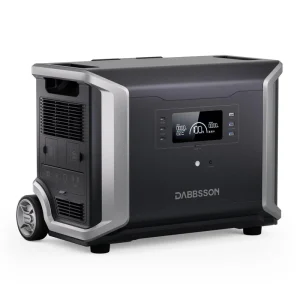Portable generators offer a diversity of power outputs, usually expressed in watts to suit various energy demands. They are mostly in ranges of 1,000 to 10,000 watts for portable power sources. Take a small 1,500-watt generator for instance… you can power essential items like lights, a refrigerator or laptop and it will run more than enough to get through shorter outages or a weekend camping trip. Meanwhile, bigger models such as a 7,500-watt generator can power larger fixtures like electric stoves, water heaters and even air conditioning equipment — great for supplying emergency home-backup power.
How much power a generator delivers is dependent on how much capacity it has, this metric is divided in two categories i.e. running watts and surge watts. Running watts describes the continuous power output of a generator, while surge watt refers to any extra burst of power required for devices like refrigerators that have electric motors and must startup. An example is a generator with 5,000 running watts and 6,500 surge watts which could easily handle a refrigerator (600W), microwave (1,000 W) and some lights (300W total) at the same time and leave plenty of overhead for other electronics.
Households are not the only place that portable generators can come in handy. These include 5- to 10-kilowatt generators used for power tools such as saws and drills on construction si t, A circular saw typically uses 1,200 watts of power, where an air compressor may use as many as 2,200 watts. It allows you to use these equipment together without overloading the system since they all work on a high-capacity generator. Forbes magazines notes that a lot of contractors run at least 5,000 watts worth of generators in order to remain productive on job sites.
Efficiency is also critical to portable generator power. The more you load it, the more fuel flow required. For instance, a 3,000-watt generator at 50% load can go through about 0.4 gallons of fuel per hour versus the same generator running at full capacity that might consume up to 0.6 gallons per hour. As fuel efficiency is crucial in increasing the operational runtime, especially in urgent situations when fuel might be minimal. For instance, an 8-gallon tank generator can last up to a maximum of 12 hours on continuous power with a 50% load.

Regional and seasonal variations - Power requirement Here in Florida, many folks prefer the larger 7kW type of portable generator to help steadfastly supply their necessary power during an extra long outage from those named hurricanes. Consumer Reports posted that more than 40 percent of U.S. households in some high natural disaster risk areas [ Demographic summary on PDF ] use, or are planning to purchase a portable generator for reliable backup power.
Despite their convenience, the safety of portable generators is always a big concern. Running your heavy-duty appliances without taking load capacity into consideration may lead to overloading of the generator. The idea to keep in mind, according to experts, is to total only the wattage for all of the devices that you're aiming to power up so that it will work properly on the appropriate generator. This is bad, the generator and appliances worst case scenario would be blown.
Finally, portable generators themselves range from producing 1,000 watts for small electronics up to 10,000 watts for large appliances and job sites of all sizes. Before you can pick the best generator, you will need to know your power needs, efficiency aims as well as what fuel sources you are already using. For resources on reputable portable generators visit highqualitygenerator.